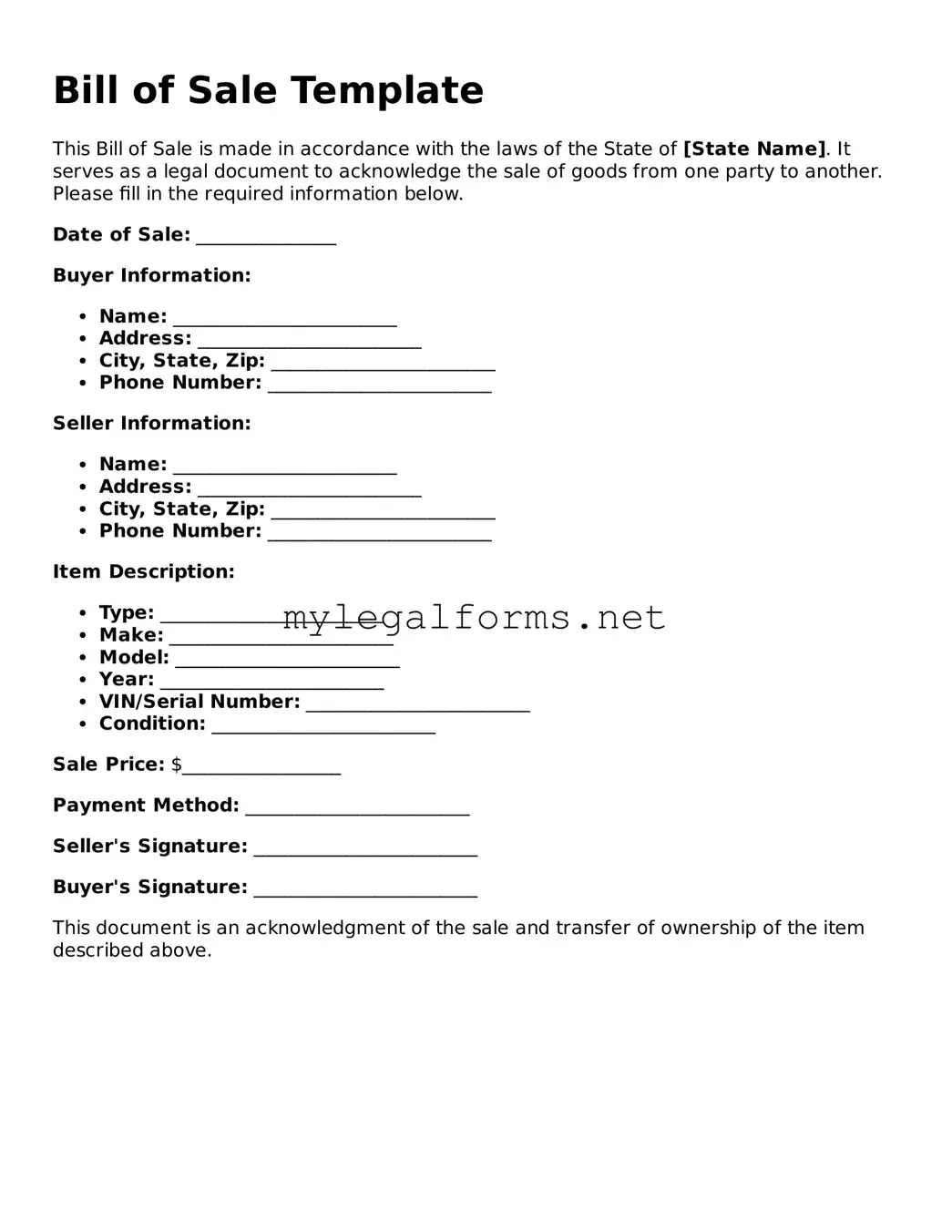Bill of Sale Template
This Bill of Sale is made in accordance with the laws of the State of [State Name]. It serves as a legal document to acknowledge the sale of goods from one party to another. Please fill in the required information below.
Date of Sale: _______________
Buyer Information:
- Name: ________________________
- Address: ________________________
- City, State, Zip: ________________________
- Phone Number: ________________________
Seller Information:
- Name: ________________________
- Address: ________________________
- City, State, Zip: ________________________
- Phone Number: ________________________
Item Description:
- Type: ________________________
- Make: ________________________
- Model: ________________________
- Year: ________________________
- VIN/Serial Number: ________________________
- Condition: ________________________
Sale Price: $_________________
Payment Method: ________________________
Seller's Signature: ________________________
Buyer's Signature: ________________________
This document is an acknowledgment of the sale and transfer of ownership of the item described above.
